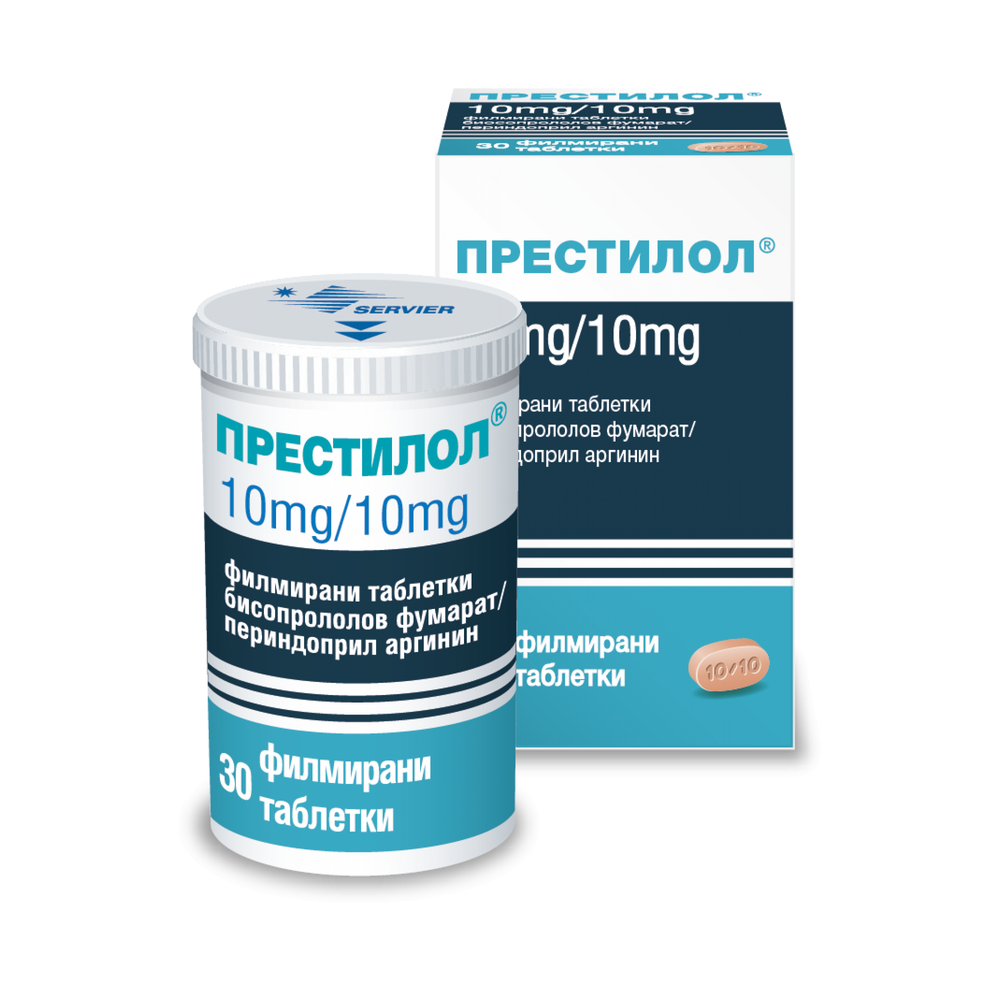

PRESTILOL

Ask a doctor about a prescription for PRESTILOL

How to use PRESTILOL
INSTRUCTIONS for medical use of the medicinal product NAPHTHYZIN®(NAPHTHYZIN®)
Composition
active substance: naphazoline; 1 ml of the preparation contains 0.5 mg or 1 mg of naphazoline nitrate; excipients: boric acid, purified water.
Pharmaceutical form
Nasal drops.
Main physical and chemical properties
Transparent, colorless or slightly yellowish liquid.
Pharmacotherapeutic group
Decongestants and other preparations for local use in diseases of the nasal cavity. Sympathomimetics. ATC code R01A A08.
Pharmacological properties
Pharmacodynamics
Naphthyzin®has a pronounced vasoconstrictive effect on peripheral vessels due to its effect on α-adrenergic receptors. When applied to mucous membranes, it reduces swelling, hyperemia, exudation, which helps to relieve nasal breathing in rhinitis. Naphazoline helps to open and expand the outlet ducts of the paranasal sinuses and Eustachian tubes, which improves the outflow of secretions and prevents the settling of bacteria.
Pharmacokinetics
When used locally, naphazoline is completely absorbed.
The therapeutic effect occurs within 5 minutes and lasts for 4-6 hours when used intranasally.
Clinical characteristics
Indications
Acute rhinitis. As an auxiliary agent in the inflammation of the paranasal sinuses and middle ear.
To reduce swelling of the mucous membrane during diagnostic intervention.
Contraindications
Increased sensitivity to any components of the medicinal product.
Dry inflammation of the nasal mucosa.
Interaction with other medicinal products and other types of interactions
The use of Naphthyzin®simultaneously with monoamine oxidase inhibitors (MAOIs), tricyclic antidepressants, maprotiline, or within several days after their cancellation may cause an increase in arterial pressure.
Special instructions
The medicinal product should be used with great caution in severe cardiovascular diseases (arterial hypertension, ischemic heart disease), in diabetes, hyperthyroidism, pheochromocytoma, concomitant use of MAOIs or other products that may have a hypertensive effect. Caution is necessary during general anesthesia using anesthetics that increase the sensitivity of the myocardium to sympathomimetics (e.g., halothane), as well as in bronchial asthma.
When using high doses of the preparation, the development of such side effects from the cardiovascular and nervous systems as palpitations, arterial hypertension, arrhythmia, headache, dizziness, drowsiness, or insomnia is possible.
It is essential to avoid prolonged use and overdose, especially in children. Prolonged use of preparations intended to relieve swelling of the mucous membrane may lead to swelling and subsequent atrophy of the nasal mucosa.
Use during pregnancy or breastfeeding
There are no data on the ability of naphazoline to penetrate the placental barrier or into breast milk. Therefore, before prescribing the preparation to women during pregnancy or breastfeeding, it is necessary to carefully consider all possible risks and benefits of treatment and prescribe the medicinal product only if it is absolutely necessary.
Ability to affect the reaction rate when driving vehicles or other mechanisms
The use of the Naphthyzin®medicinal product in recommended doses does not affect the ability to drive vehicles or mechanisms. When exceeding the recommended doses, dizziness and drowsiness are possible.
Method of use and doses
Naphthyzin®is instilled into each nasal passage, tilting the head slightly back and to the right when instilling into the right nostril and to the left when instilling into the left nostril.
For therapeutic purposes. Adults and children over 15 years old - 1-3 drops of 0.05%-0.1% solution into each nasal passage.
Children aged 3-6 years are instilled with a 0.05% solution, 1-2 drops into each nasal passage;
children aged 6-15 years - 2 drops into each nasal passage.
Naphthyzin®is used 3 times a day, but not more often than every 4 hours.
Naphthyzin®should not be used for more than 5 days in adults and more than 3 days in children.
Naphthyzin®can be used again only after a few days.
In case of nasal bleeding, use tampons moistened with a 0.05% solution of the preparation.
For diagnostic purposes (e.g., for the diagnosis and treatment of nasal polyps). After cleaning the nasal cavity, 3-4 drops of 0.05%-0.1% solution are instilled into each nasal passage or a tampon moistened in a 0.05%-0.1% solution is inserted for 2-3 minutes.
In case of swelling of the vocal cords, 1-2 ml of the preparation is injected with a laryngeal syringe.
Children
Children aged 3 to 15 years can use Naphthyzin®0.05%.
Children over 15 years old can use Naphthyzin®0.1%.
Overdose
Overdose or accidental ingestion of the preparation may cause systemic side effects: nervousness, increased sweating, headache, tremor, tachycardia, feeling of palpitations, arterial hypertension. Cyanosis, nausea, increased body temperature, spasms, cardiac arrest, pulmonary edema, mental disorders, pallor of the skin, heart attack may occur.
The suppressive effect on the central nervous system is manifested by such symptoms as decreased body temperature; bradycardia; increased sweating; drowsiness; shock-like hypotension; apnea; coma. The risk of overdose is higher in children, who are more susceptible to the negative effects than adults.
Treatment is symptomatic.
Side effects
When used in recommended doses, Naphthyzin®is usually well-tolerated. In patients with increased sensitivity, the medicinal product may rarely cause burning and dryness of the nasal mucosa. In isolated cases, a feeling of severe nasal congestion may occur.
Only in isolated cases does a systemic side effect occur (most often with overdose):
- from the immune system: allergic reactions, including Quincke's edema, burning;
- from the nervous system: nervousness, headache, tremor;
- from the cardiovascular system: tachycardia, palpitations;
- from the vascular system: arterial hypertension;
- from the skin and subcutaneous tissue: increased sweating.
Prolonged (more than 5 days for adults and more than 3 days for children) or frequent use of the medicinal product may lead to habituation, which is accompanied by intense swelling of the nasal mucosa, occurring after a relatively short period of time after use. Long-term use of the preparation may cause damage to the epithelium of the mucous membrane, suppression of the activity of the epithelial cilia, and cause irreversible damage to the mucous membrane and the development of dry rhinitis.
Shelf life
3 years.
After opening the bottle, the shelf life of the preparation is 28 days.
Do not use the preparation after the expiration date stated on the packaging.
Storage conditions
Store in the original packaging at a temperature not exceeding 25 °C. Store in a place inaccessible to children.
Packaging
10 ml in a glass bottle. 1 bottle in a pack.
Release category
Without a prescription.
Manufacturer
Pharmaceutical company "Pharmak".
Location of the manufacturer and its address
Ukraine, 04080, Kyiv, Kyrylivska street, 74.
- Country of registration
- Active substance
- Prescription requiredYes
- Manufacturer
- This information is for reference only and does not constitute medical advice. Always consult a licensed doctor before taking any medication. Oladoctor is not responsible for medical decisions based on this content.
- Alternatives to PRESTILOLDosage form: capsules, 5mg/4mgActive substance: perindopril and bisoprololManufacturer: ТОВ НВФ "МІКРОХІМPrescription requiredDosage form: capsules, 5mg/8mgActive substance: perindopril and bisoprololManufacturer: ТОВ НВФ "МІКРОХІМPrescription requiredDosage form: tablets, 10 mg/5 mgActive substance: perindopril and bisoprololManufacturer: Лабораторії Серв'є ІндастріPrescription required
Alternatives to PRESTILOL in other countries
The best alternatives with the same active ingredient and therapeutic effect.
Alternative to PRESTILOL in Poland
Alternative to PRESTILOL in Spain
Online doctors for PRESTILOL
Discuss dosage, side effects, interactions, contraindications, and prescription renewal for PRESTILOL – subject to medical assessment and local rules.









